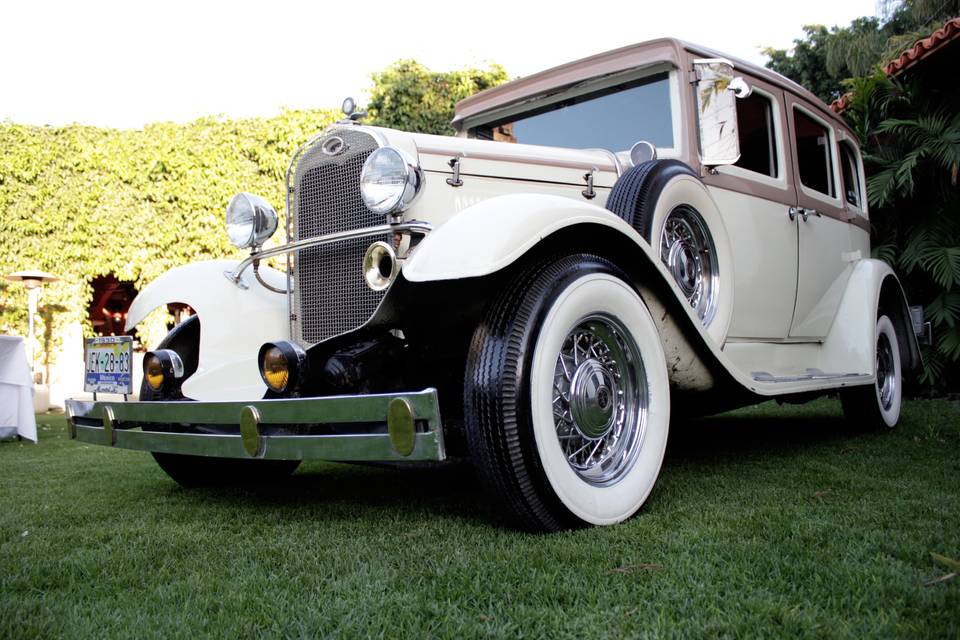Classic Cars: A Timeless Journey Through Automotive History
Classic cars, or autos clásicos, hold a unique charm that captures the imagination of car enthusiasts and casual admirers alike.
From their elegant designs to the nostalgic feeling they evoke, these cars represent not only a means of transportation but also a cultural symbol of past eras. Whether for their mechanical innovation or artistic beauty, classic cars continue to have a lasting impact on automotive history.
In this article, we will explore the significance of classic cars, their timeless appeal, and what makes them stand out in the world of modern vehicles.
Table of Contents
- What Defines a Classic Car?
- The Evolution of Classic Cars
- Why Are Classic Cars So Popular?
- Collecting Classic Cars: A Growing Hobby
- Iconic Classic Cars Throughout History
- The Market Value of Classic Cars
- Restoration of Classic Cars
- Classic Cars vs. Modern Vehicles
- FAQs About Classic Cars
- Conclusion
What Defines a Classic Car?
A classic car is generally defined as a vehicle that is over 20 to 25 years old, but this is just a starting point. What makes a car “classic” goes beyond its age. It often refers to cars that possess unique design elements, technical innovation, or a significant historical impact. Most classic cars were produced during a time when craftsmanship, attention to detail, and mechanical engineering were at their peak.
The Evolution of Classic Cars
Classic cars have evolved from simple machines into highly prized collectors’ items. In the early 1900s, automobiles were considered a luxury, only accessible to the wealthy. However, as manufacturing methods advanced, more people could afford cars, and designs became increasingly elaborate.
By the mid-20th century, cars were not only practical but also served as symbols of wealth, innovation, and style. During this time, some of the most iconic classic cars were produced, such as the Ford Mustang and Chevrolet Corvette, which continue to influence car design today.
Why Are Classic Cars So Popular?
The popularity of classic cars has surged for several reasons:
- Nostalgia: Classic cars evoke memories of simpler times, bringing back a sense of nostalgia for older generations.
- Craftsmanship: Many classic cars were hand-built with superior materials, giving them a level of quality often lacking in today’s mass-produced vehicles.
- Style: The unique and innovative designs of classic cars are timeless, appealing to car enthusiasts and collectors alike.
Collecting Classic Cars: A Growing Hobby
Owning and collecting classic cars has become more than just a hobby—it’s a passion. Many collectors view their classic cars as investments, often restoring them to their former glory. While it can be an expensive endeavor, the satisfaction of owning a piece of automotive history is worth it to many enthusiasts.
Iconic Classic Cars Throughout History
Some classic cars have made such a significant impact that they are considered icons. Here are a few examples:
- Ford Model T (1908-1927): Often called the car that “put the world on wheels,” this was the first mass-produced car.
- Chevrolet Bel Air (1953-1975): Known for its flashy design and powerful engine, this car is a symbol of 1950s America.
- Porsche 911 (1964-present): The Porsche 911’s timeless design and excellent performance have made it one of the most beloved sports cars.
The Market Value of Classic Cars
The value of classic cars has risen significantly over the years, making them a lucrative investment for collectors. Cars in pristine condition, with low mileage and original parts, tend to fetch the highest prices. Classic car auctions often showcase rare and unique vehicles that can sell for hundreds of thousands—or even millions—of dollars.
Restoration of Classic Cars
Restoring a classic car is a labor of love that requires patience, skill, and often, a lot of money. Many owners choose to restore their cars to preserve their historical authenticity, while others opt for resto-mods—a combination of restoration and modernization.
The goal of restoration is to bring the car back to its original state, using genuine parts and following traditional methods of repair. This not only increases the car’s value but also its reliability and aesthetic appeal.
Classic Cars vs. Modern Vehicles
While modern vehicles are known for their advanced technology, efficiency, and safety features, they often lack the soul and craftsmanship that define classic cars. Here’s a comparison:
| Feature | Classic Cars | Modern Vehicles |
|---|---|---|
| Technology | Minimal to none | High-tech with automation and AI |
| Aesthetic Appeal | Unique, handmade designs | Standardized, mass-produced |
| Value Over Time | Often increases, especially if well-maintained | Depreciates rapidly after purchase |
| Driving Experience | Raw, mechanical, engaging | Smooth, with assistive technologies |
FAQs About Classic Cars
What makes a car a classic?
A car is typically considered classic if it is over 20-25 years old, but it must also have unique design or historical significance.
Are classic cars a good investment?
Yes, classic cars can be a good investment if maintained well. Their value can appreciate over time, especially for rare models.
What is the difference between classic and antique cars?
While both terms refer to old cars, classic cars are generally 20-40 years old, while antique cars are over 45 years old.
Is it expensive to maintain a classic car?
Yes, maintaining a classic car can be costly due to the scarcity of parts and the need for specialized mechanics.
Can you drive a classic car every day?
While some people do, it’s generally not recommended due to wear and tear, fuel inefficiency, and lack of modern safety features.
Conclusion
Classic cars are more than just vehicles; they are pieces of history that represent the evolution of the automobile industry. Their timeless designs, historical significance, and nostalgic appeal make them a valuable part of automotive culture. Whether you’re an enthusiast or collector, understanding the world of autos clásicos opens up a realm of beauty, craftsmanship, and innovation that continues to captivate generations.




